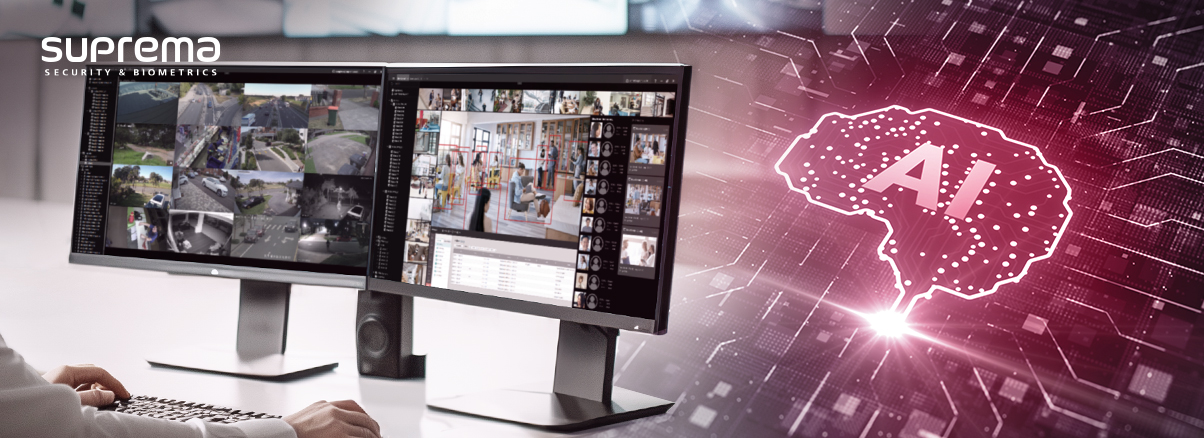- Latest press releases from Suprema

As far as technology is concerned, AI definitely ranks on top in Korea’s security market. Mobile credentials, meanwhile, are also gaining momentum. This article looks at some of the trending technologies in the Korean security market.
AI
More and more, Korean users have realized the benefits of AI, which has a range of applications from facial recognition to license plate recognition.
“I think AI is the biggest trend. As artificial intelligence is applied to CCTV, the efficiency, accuracy, and safety levels of video security are increasing. In particular, intelligent CCTV incorporating artificial intelligence technology is evaluated as being effective in preventing crimes and accidents by analyzing video in real time. Additionally, as the demand for AI functions applicable to various environments expands, AI products are expected to be actively incorporated into high-resolution solutions,” said Su-Bin Yeon, Assistant Manager at IDIS.
“There is a rising adoption of advanced technologies like AI and deep learning in security solutions. AI is used not only in facial recognition but also in video analytics, behavior detection, and intrusion detection. It’s also deeply integrated into security solutions, such as biometric authentication and video analytics, enabling real-time behavior monitoring and anomaly detection. AI-driven integrated security systems, which enhance both security and operational efficiency, are becoming increasingly important,” said Hanchul Kim, CEO of Suprema.
Kim adds that government support is also vital in driving AI growth. “The Korean government organization announced to expand investment in next-generation core technologies. Especially the AI area was expanded to KRW 777.2 billion in 2024 from KRW 705.1 billion in 2023. Korea's robust tech infrastructure, along with government initiatives and rising demand for advanced security solutions in both the public and private sectors, is fueling the growth of AI-driven security technologies,” he said.
Edge AI
It’s worth noting that Korea's AI technology is increasingly moving towards the edge in the form of edge AI cameras, which lower bandwidth consumption and react to events faster.
“Korea has a strong interest in object recognition through edge AI cameras. As labor costs rise, maximizing monitoring efficiency becomes paramount, necessitating smart and accurate alarms. Technologies for vehicle classification, license plate recognition, and human identification from others are being developed to address these security needs. Additionally, parking solutions, such as detecting available spaces and locating vehicles, along with safety applications like forklift monitoring and fall detection, are being implemented directly at the camera level,” said Chuck Jeon, VP and Head of the APAC Sales Department of Hanwha Vision. “The industry is set for continued growth in 2024, driven by the widespread adoption of deep learning-based AI technologies. These technologies, particularly Edge AI, significantly enhance security measures, accelerate response times, and optimize data transmission costs.”
The growth in edge AI cameras is also driven by advances in hardware and software. “The SoCs currently used in cameras are transitioning to high-performance chips like the Eyenix EN683, which has 5TOPS performance. AI software is directly embedded in the cameras, enabling faster and more efficient data processing and analysis. These technological advancements contribute to improved real-time analysis and efficiency,” said Sungin Kim, Marketing Team Leader at Webgate.
Mobile credentials
The use of mobile credentials, hence opening doors with the mobile device, is also gaining popularity in Korea. Large enterprises, for example, are increasingly adopting mobile access solutions, where employee IDs are uploaded to their smartphones, which can be used to open doors alone or in combination with other authenticators.
“Given Korea's tech-savvy population and widespread use of mobile devices, mobile credentials have become a preferred option for security in both corporate and residential settings. Suprema offers the industry's most extensive range of multi-credential options, including facial authentication, fingerprint recognition, mobile access, QR codes, barcodes, PINs, and RFID. Multi-factor authentication (MFA) with Suprema’s diverse options provides enhanced protection for high-security areas,” Kim of Suprema said.
“Additionally,” he adds, “Suprema’s ‘Template on Mobile’ (ToM) allows users to securely store and manage their facial data on personal smartphones, offering the convenience of building access solely with their mobile devices, combined with facial authentication for heightened security.”
Source: asmag.com












